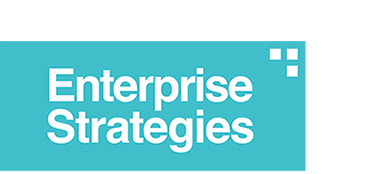18 Mar How To Make Your Intranet Worthy Of Trust
According to the Great Places to Work Institute, which compiles the annual list of the Best Companies to Work For, trust is “the defining principle of great workplaces.”
When my former company conducted a comprehensive internal survey a few years ago, the corporate intranet was ranked as the most trusted source of important information about the company. Other sources, including top leaders, direct supervisors, and co-workers, lagged far behind the intranet.
At first, I was confused by this result. How could a digital environment be more trusted than face-to-face contact?
I met with employees across the organization to probe further, and, together, we identified various attributes and behaviors that inspired trust in our intranet. Here are twelve tips:
(1) Be respectful. Or, put another way: Trust begins with trust. In everything you do, demonstrate your respect for all the people of your organization, regardless of their rank, function, location, or tenure. Seek to understand the work they do, and constantly evolve to better serve them.
(2) Be accessible. Develop multiple points of access — from desktops, at shared kiosks, from home, and from mobile devices — to reach all the people of your organization.
(3) Load quickly. Your people are busy. Allow them to get in, find what they need, and get on with their work. Ensure that performance and page loads are snappy, even for remote workers. People expect immediate gratification, and will ignore your intranet if you make it intolerably slow or erect complicated login procedures.
(4) Be consistent. Not only should your intranet offer a consistent experience — with consistent design, navigation, and interactive elements throughout — but it should also be consistent with your organization’s strategies and values. People tell me that they tune in as long as we offer something of interest to them and their jobs. The burden is on us to remain relevant.
(5) Keep pace with consumer technology. Your intranet need not necessarily be a breathtaking work of art, or feature all the latest technology, but it does need to possess a professional appearance and follow emerging conventions. Consumer technology is setting the expectations of your people; if you can’t keep pace, they’ll notice that you don’t seem to care about them.
(6) Pay attention to detail. Every word, image, link, figure, and form has the opportunity to inspire — or disappoint. Test early, test often, and make corrections swiftly.
(7) Be fresh and timely. No one likes — or trusts — stale or obsolete information. Publish news and announcements as quickly as possible, and compress approval cycles. You can always add more details later. Incorporate real-time performance indicators and invite people to subscribe to alerts by e-mail or text.
(8) Bring the outside inside. Your employees will trust you more if you give them a complete picture, and not just the sanitized corporate announcements. List customer compliments and complaints, show how your organization is viewed in the public media, and share industry and economic trends.
(9) Encourage dialogue. By incorporating employee sentiments, we offer a kaleidoscope of perspectives from across the organization, for all to see. In a sense, any company announcement goes through the crucible of public opinion, and the ebb and flow of conversation, questions and answers, and subject-matter expertise results in a reality check and enhanced credibility.
(10) Welcome dissent. Of course, encouraging dialogue without allowing dissent is a recipe for disaster. It’s important that you permit — and encourage — employees to disagree, and to offer alternatives, as long as they adhere to your guidelines and remain respectful. This dialogue and dissent can lead to policy changes if leaders are humble enough to reverse decisions in search of improved outcomes.
(11) Monitor all activity. Read every comment, review and optimize the most common search terms, and witness behavior across your intranet. By doing so, you can check for understanding, spot trends, and adjust accordingly.
(12) Respond to feedback. My former intranet offered a feedback form on every page, and we committed to a response within minutes. Every response was appreciative, respectful, and explained how we would take any necessary action. I always took great delight when feedback offered a suggestion for a new feature, and I was able to explain in my response that the feature had been swiftly adopted.
Your people deserve an intranet they can trust. Follow these tips and you’ll be well on your way to a trustworthy intranet… and maybe a great place to work, too.

